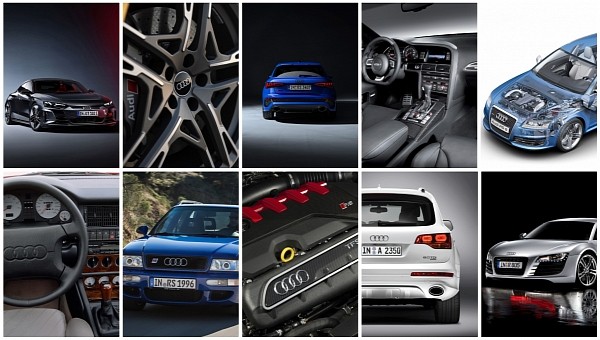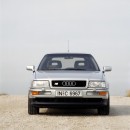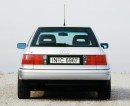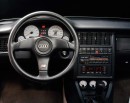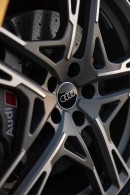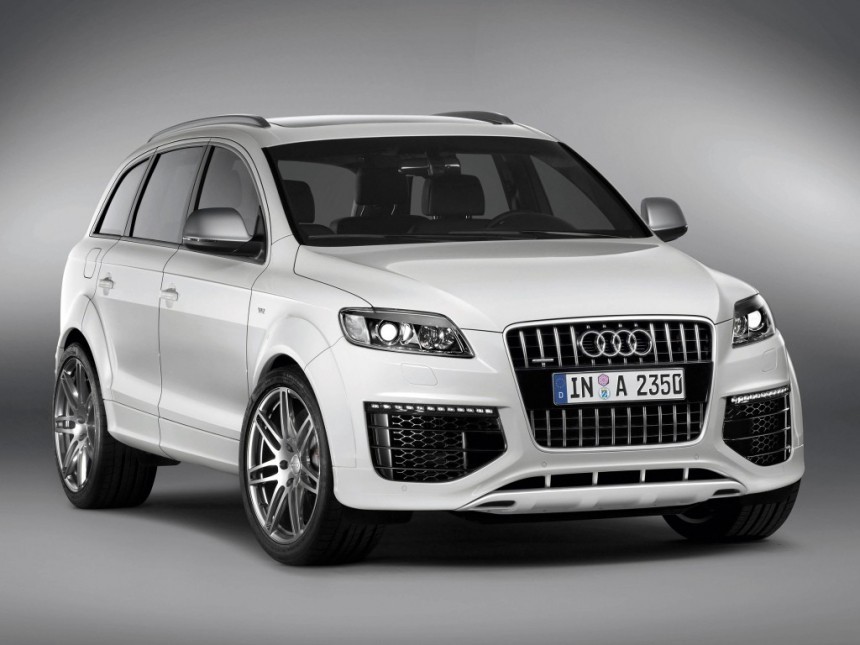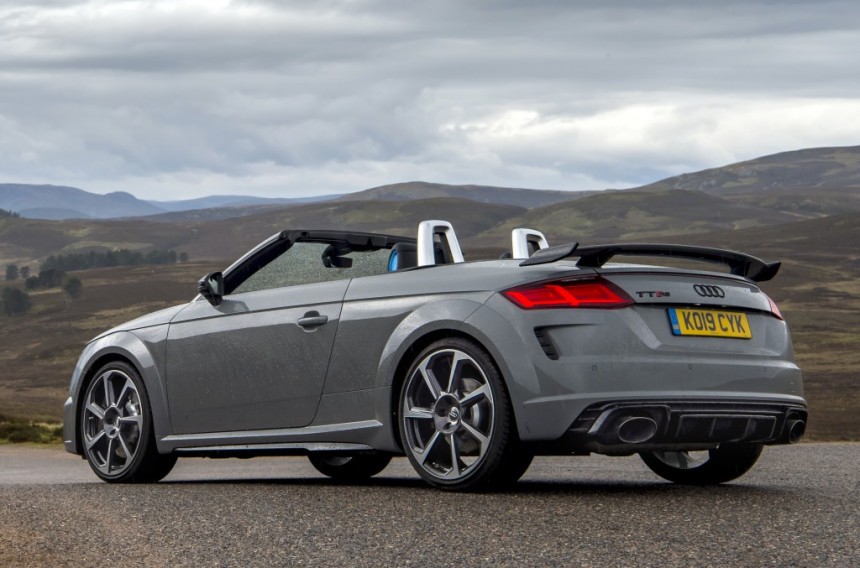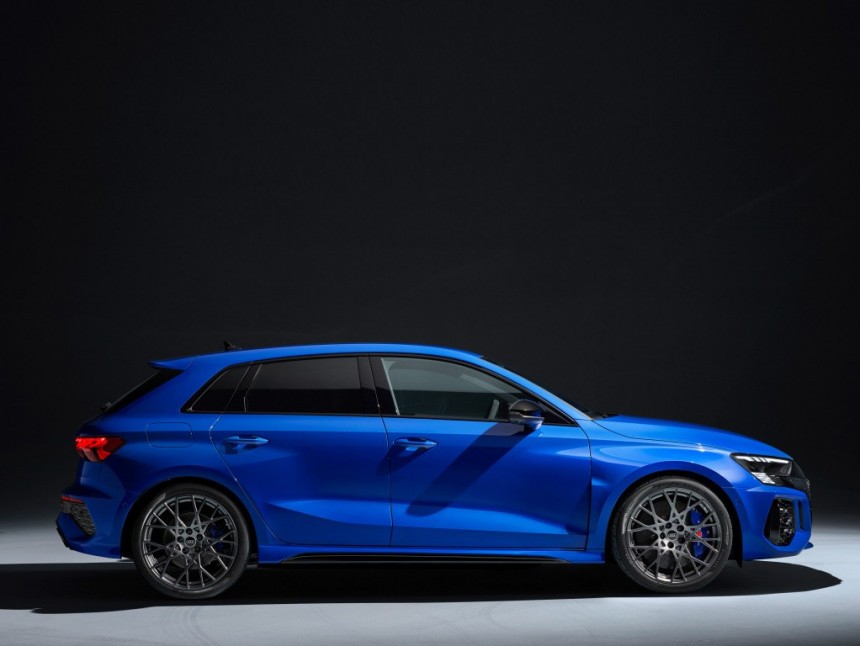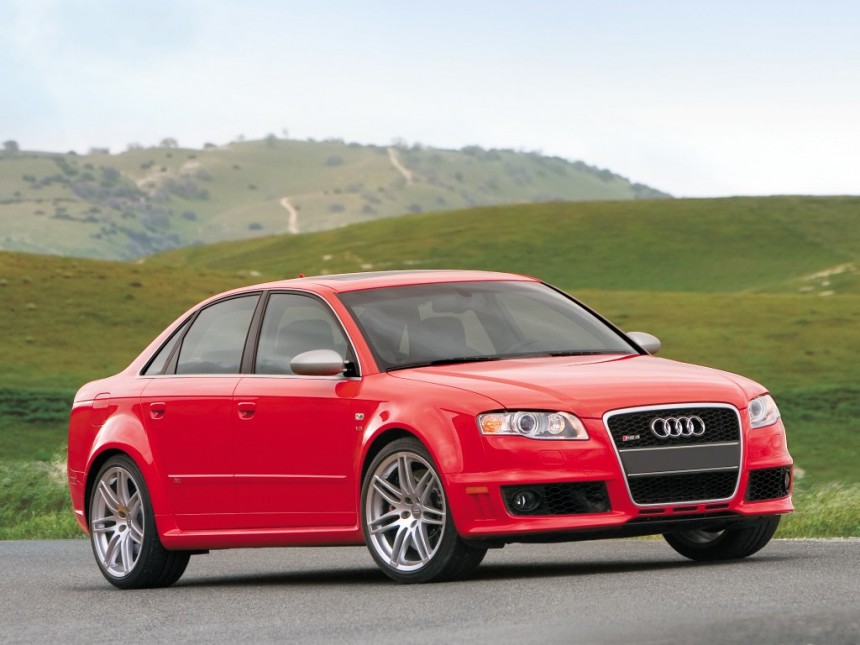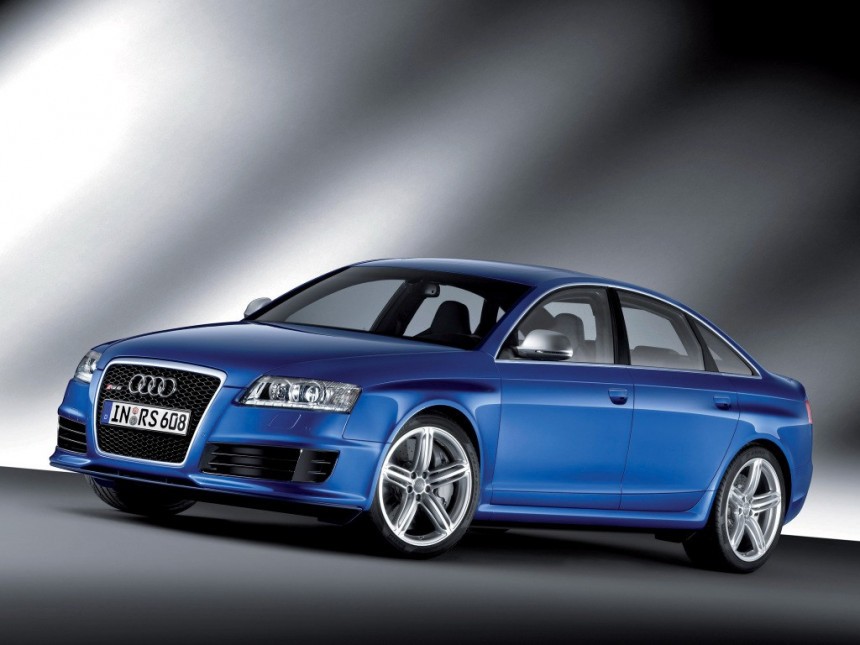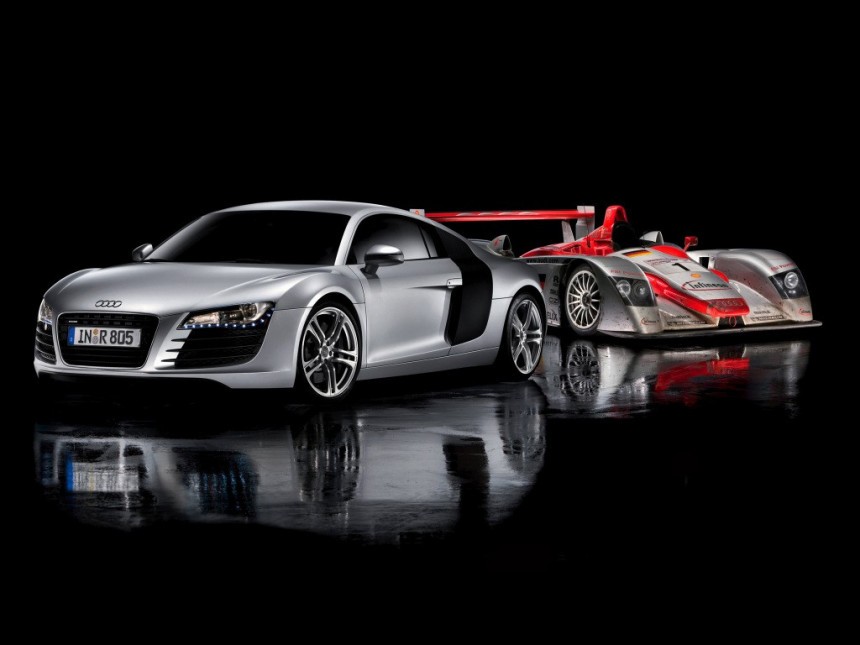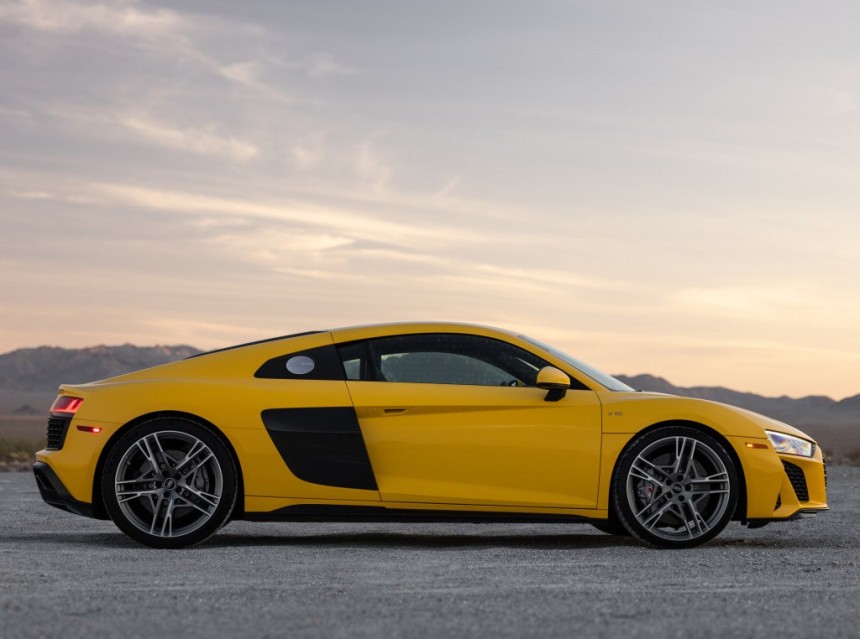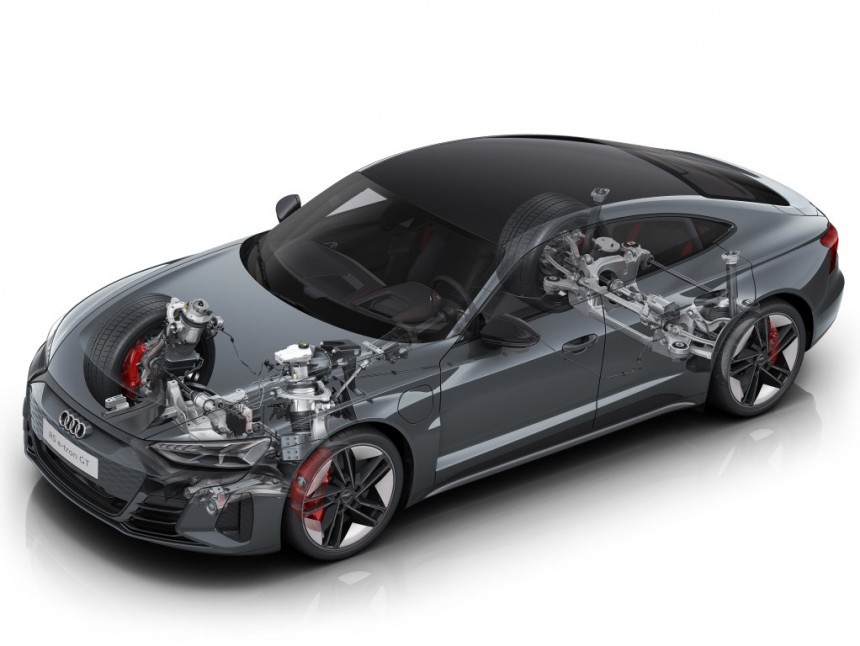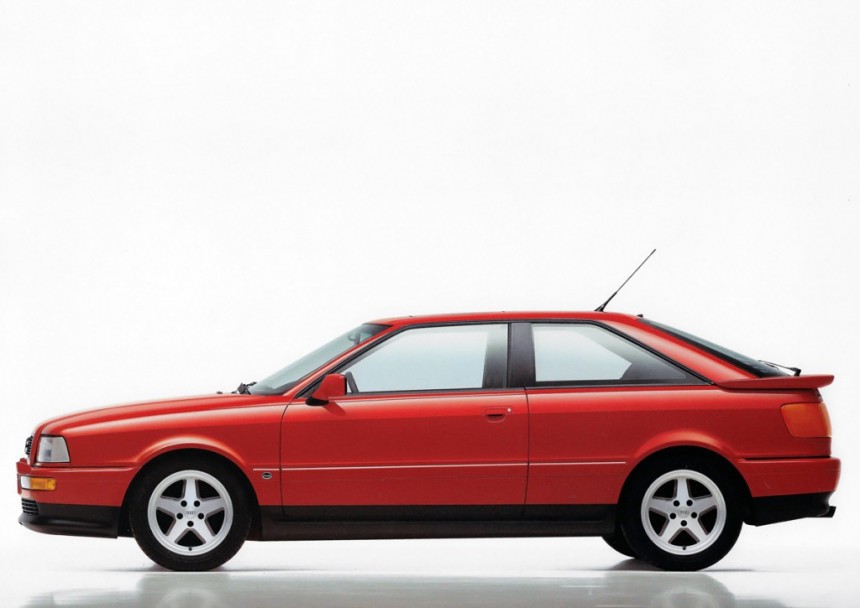Owned by Volkswagen since the ‘60s, the Four Rings of Ingolstadt wouldn’t have been possible without a gentleman by the name of August Horch founding August Horch Automobilwerke in July 1909. After being sued by his former business partners for trademark infringement, the German automobile pioneer renamed said company to Audi Automobilwerke in April 1910.
Horch simply translated his family name into Latin, with Audi establishing itself as a force to be reckoned with at the International Austrian Alpine Rally. Come 1932, Audi merged with Horch, Wanderer, and DKW to form Auto Union. The resulting company blessed us car enthusiasts with the absolutely insane racing cars in the 1930s, boasting supercharged V16 and V12 engines.
In the aftermath of World War II, the German automaker didn’t offer too much in the way of sporty machines. The 100 Coupe and 100 Coupe S are two fine examples, but Audi wouldn’t get properly sporty until the 1980s with the Quattro’s rollout and founding of quattro GmbH.
Renamed Audi Sport GmbH in late 2016, the high-performance arm from Neckarsulm gave us a great number of iconic machines over the years. It was exceptionally hard to choose 10 for this ranking, which kicks off with a vehicle that many peeps don’t know that it was developed by the mad professors at Audi Sport.
Arguably the most leftfield series-production automobile of the 10 that we’re picked for this feature, the Q7 V12 TDI quattro also happens to pack the largest engine of the bunch. It’s also the torquiest, as expected of a 5.9-liter turbo diesel V12. The badge on the liftgate may read 6.0, but it actually displaces 5,934 cubic centimeters.
Loosely inspired by the diesel engine technology proven in endurance racing by the R10 TDI racecar, the twin-turbo mill was originally rated at 500 ps (make that 493 horsepower) and a mammoth 1,000 Nm (738 pound-feet) of torque. By comparison, the 48V-assisted V8 turbo diesel in the SQ7 TDI is good for up to 435 ps (429 horsepower) and 900 Nm (664 pound-feet) fully stock.
The world’s only series-production passenger vehicle to flaunt a V12 diesel needs a scant 5.5 seconds from a standstill to 100 kilometers per hour (62 miles per hour) according to Audi, which had to revise the Q7’s suspension and brakes for this powerplant. Audi intended to federalize the V12-engined SUV in the United States of America, but given the global financial crisis of 2008, that plan was unceremoniously canned.
Rather than the RS 3, the TT RS was the first compact Audi model of the modern era to receive a five-cylinder turbo. A nod to the stupendous-sounding powerplant of the RS 2 Avant that we’ll touch upon a bit later, the EA855 (and subsequent EA855 evo) is unique in the segment.
Following the introduction of the RS 2 Avant, subsequent RennSport models were produced in Neckarsulm. Not the TT RS, though, for it broke this tradition to streamline production. Originally available with a manual transmission, the TT RS continues to be manufactured in Gyor, Hungary, alongside lesser TTs.
Despite being one of the most celebrated designs in the automaker's lineup (the original is oh-so pretty to this day), the TT as we know it will be sadly discontinued. An electric vehicle in the same price range will serve as its replacement, although said successor may be a crossover rather than a coupe.
The RS 3 further popularized the five-cylinder turbo of the TT RS, together with the RS Q3. The five-door hatchback was preceded by the S3 in 1999, a three-door model that’s quite impressive by modern standards. From a displacement of 1.8 liters, the turbocharged engine makes 225 ps (225 hp) and 280 Nm (207 lb-ft).
The RS 3 originally launched with five doors, a body style that Audi likes to call Sportback. The four-door sedan would follow suit, and much to the surprise of the U.S. car enthusiast, the RS 3 was – and still is – offered in this part of the world in the more elegant body style.
At $60,900 sans freight for the 2023 model year, the RS 3 isn’t particularly cheap for a compact. But given that the RS Q3 isn’t available stateside, the RS 3 remains the only five-cylinder proposition in the compact segment.
The heir apparent of the RS 2 Avant, the RS 4 Avant launched in 1999 for the 2020 model year with a 2.7-liter biturbo V6. Designed in collaboration with Cosworth and Porsche, the B5 would be replaced by the B7 in 2006 with – get this – a free-breathing V8 powerplant that spins to 8,000 rpm and cuts off the gas at 8,250 rpm.
Very similar in design to the 4.2-liter V8 of the first-generation R8 supercar, this engine was exclusively connected to a Getrag-supplied manual transmission. The B7-generation RS 4 also introduced a new variant of the long-running Torsen center differential, featuring a default setting of 40 percent fore and 60 percent aft.
Wider than the A4 on which it’s based, the Audi Sport model was crowned World Performance Car in 2007. Top Gear named it the Most Surprising Car of the Year in 2005 despite the V8-engined E90 BMW M3 always winning back-to-back comparisons against the B7.
Initially offered with a force-fed V8, and currently boasting a force-fed V8 as well, the RS 6 left everyone speechless in September 2007 at the Frankfurt Auto Show. Based on the C6-gen A6, the second-generation RS 6 packs a 5.0-liter V10 of Lamborghini origin.
Or is it Audi origin considering that Audi was in charge of Lamborghini back then? This chicken-or-the-egg dilemma doesn’t really matter if you remember that the first example of the Gallardo was delivered in 2003 as opposed to 2008 for Audi Sport’s mid-size model.
Closely related to the Gallardo’s engine, the odd-firing V10 differs greatly from the powerplant in the baby Lambo by means of 23 psi of boost pressure from a couple of turbochargers. Audi Sport couldn’t make a case for a manual gearbox, with the only transmission available supplied by ZF in the guise of the 6HP.
When it premiered in 2006 at the Paris Motor Show, the R8 came with a B7 RS 4-based V8 rated at 420 ps (414 horsepower) and 430 Nm (317 pound-feet) on 98-octane super unleaded. Not apparent at the time to some people, Audi Sport – then still known as quattro GmbH – used the Lamborghini Gallardo as the basis for the R8.
The press release waxes lyrical about incorporating the DNA of a Le Mans-winning racecar into the R8, and the German manufacturer also drew a parallel to the midship layout of the Auto Union Type C from the 1930s. Previewed by the LeMans Quattro concept from the 2003 Frankfurt Motor Show, the original R8 was penned by Italian designer Walter de Silva, the man who also gave us the 2005 to 2012 SEAT Leon, Alfa Romeo 147, as well as the Lamborghini Miura 2006 concept.
The R8 also aped the Gallardo in terms of transmission choices, beginning with the gated six-speed manual supplied by Graziano. Currently owned by Dana, the Italian outfit was also responsible for the automated manual advertised either as E-gear or R tronic.
The base V8 would be discontinued in favor of the Gallardo’s V10, and the automated manual would make room for yet another Graziano-supplied transmission. The DL800 in combination with that sonorous V10 is a match made in heaven. The R8 entered its second generation in 2015 at the Geneva Motor Show.
Sharper, pokier, and more expensive than its predecessor, the Huracan-twinned second generation wasn’t and still isn’t available with a manual. It will never get one from the factory because the assembly line will sadly come to a screeching halt in late 2023.
Similar to the TT, an electric successor is (reportedly) in the works. It will be a slow burn, though, because the Volkswagen Group still doesn’t have the right platform for this application. Reportedly codenamed Rnext, the all-electric successor may be built around the upcoming SSP (Scalable Systems Platform) Sport platform.
The e-tron GT is not the first electric vehicle from the Four Rings of Ingolstadt, but it is the first electric vehicle to get the RennSport treatment. Audi didn’t have the liberty it may have wanted in designing this fellow, for it had to borrow the J1 architecture from Porsche.
It wasn’t a bad choice, though. In addition to dual-motor powertrains, the J1 also rocks an 800-volt electrical system, with said 800 volts making a world of difference. Not only does the 800V electrical system require thinner-gauge wiring, but it further enables faster charging, less heat, and more consistent acceleration performance.
A blueprint for next-generation EVs from Audi Sport, the RS e-tron GT has another trick up its sleeve, inherited from Porsche. The rear axle is gifted with a two-speed transmission designed for better acceleration in first and higher efficiency and speeds in second. Zero to 60 mph (97 kph) takes 3.1 seconds, whereas top speed is limited to 155 mph (250 kph), according to the manufacturer.
The RS 2 Avant is often considered quattro GmbH’s first production car, but that’s not 100 percent correct. More on that later, though, because the RS 2 Avant is the model that shaped quattro GmbH’s course more than every other sporty Audi out there, with the likely exception of the RS e-tron GT due to the inevitable switch to zero-emission powertrains.
The first RennSport and first high-performance Avant was built for a little over a year by Porsche in Zuffenhausen. Based on the Audi 80 that would be succeeded by the A4 and A5, the five-pot turbo RS 2 Avant was expected to sell 2,200 units. 2,891 would be eventually assembled, with 180 specified in RHD.
Audi wouldn’t use the RS moniker again until the B5 RS 4, which ran between May 2000 and September 2001. Merely 6,030 units had been produced, of which approximately 500 were finished in right-hand drive.
The successor of the Quattro and predecessor of the RS 2 Avant is – drum roll please – a boxy coupe designed and engineered by quattro GmbH. The S2 started the S series that slots between the A and RS series. Produced in Neckarsulm between 1991 and 1995, the S2 was offered in a total of three body choices.
The three-door liftback coupe is – hands down – the one to have. It’s also the closest thing to the Quattro and Sport Quattro before it, automotive icons that made a name for themselves in the World Rally Championship.
A five-door wagon and four-door sedan were introduced later in the S2’s production run. The S2 started life with 220 ps (217 horsepower) from a 2.2-liter turbocharged five-cylinder mill. It was retired with 230 ps (227 hp) on tap, with Audi quoting 5.8 seconds to 100 kilometers per hour (62 miles per hour). What about top speed? Make that 250 kilometers per hour (155 miles per hour).
In the aftermath of World War II, the German automaker didn’t offer too much in the way of sporty machines. The 100 Coupe and 100 Coupe S are two fine examples, but Audi wouldn’t get properly sporty until the 1980s with the Quattro’s rollout and founding of quattro GmbH.
Renamed Audi Sport GmbH in late 2016, the high-performance arm from Neckarsulm gave us a great number of iconic machines over the years. It was exceptionally hard to choose 10 for this ranking, which kicks off with a vehicle that many peeps don’t know that it was developed by the mad professors at Audi Sport.
10. Audi Q7 V12 TDI quattro
Loosely inspired by the diesel engine technology proven in endurance racing by the R10 TDI racecar, the twin-turbo mill was originally rated at 500 ps (make that 493 horsepower) and a mammoth 1,000 Nm (738 pound-feet) of torque. By comparison, the 48V-assisted V8 turbo diesel in the SQ7 TDI is good for up to 435 ps (429 horsepower) and 900 Nm (664 pound-feet) fully stock.
The world’s only series-production passenger vehicle to flaunt a V12 diesel needs a scant 5.5 seconds from a standstill to 100 kilometers per hour (62 miles per hour) according to Audi, which had to revise the Q7’s suspension and brakes for this powerplant. Audi intended to federalize the V12-engined SUV in the United States of America, but given the global financial crisis of 2008, that plan was unceremoniously canned.
9. Audi TT RS
Following the introduction of the RS 2 Avant, subsequent RennSport models were produced in Neckarsulm. Not the TT RS, though, for it broke this tradition to streamline production. Originally available with a manual transmission, the TT RS continues to be manufactured in Gyor, Hungary, alongside lesser TTs.
Despite being one of the most celebrated designs in the automaker's lineup (the original is oh-so pretty to this day), the TT as we know it will be sadly discontinued. An electric vehicle in the same price range will serve as its replacement, although said successor may be a crossover rather than a coupe.
8. Audi RS 3
The RS 3 originally launched with five doors, a body style that Audi likes to call Sportback. The four-door sedan would follow suit, and much to the surprise of the U.S. car enthusiast, the RS 3 was – and still is – offered in this part of the world in the more elegant body style.
At $60,900 sans freight for the 2023 model year, the RS 3 isn’t particularly cheap for a compact. But given that the RS Q3 isn’t available stateside, the RS 3 remains the only five-cylinder proposition in the compact segment.
7. Audi RS 4 B7
Very similar in design to the 4.2-liter V8 of the first-generation R8 supercar, this engine was exclusively connected to a Getrag-supplied manual transmission. The B7-generation RS 4 also introduced a new variant of the long-running Torsen center differential, featuring a default setting of 40 percent fore and 60 percent aft.
Wider than the A4 on which it’s based, the Audi Sport model was crowned World Performance Car in 2007. Top Gear named it the Most Surprising Car of the Year in 2005 despite the V8-engined E90 BMW M3 always winning back-to-back comparisons against the B7.
6. Audi RS 6 C6
Or is it Audi origin considering that Audi was in charge of Lamborghini back then? This chicken-or-the-egg dilemma doesn’t really matter if you remember that the first example of the Gallardo was delivered in 2003 as opposed to 2008 for Audi Sport’s mid-size model.
Closely related to the Gallardo’s engine, the odd-firing V10 differs greatly from the powerplant in the baby Lambo by means of 23 psi of boost pressure from a couple of turbochargers. Audi Sport couldn’t make a case for a manual gearbox, with the only transmission available supplied by ZF in the guise of the 6HP.
5. Audi R8 V8
The press release waxes lyrical about incorporating the DNA of a Le Mans-winning racecar into the R8, and the German manufacturer also drew a parallel to the midship layout of the Auto Union Type C from the 1930s. Previewed by the LeMans Quattro concept from the 2003 Frankfurt Motor Show, the original R8 was penned by Italian designer Walter de Silva, the man who also gave us the 2005 to 2012 SEAT Leon, Alfa Romeo 147, as well as the Lamborghini Miura 2006 concept.
The R8 also aped the Gallardo in terms of transmission choices, beginning with the gated six-speed manual supplied by Graziano. Currently owned by Dana, the Italian outfit was also responsible for the automated manual advertised either as E-gear or R tronic.
4. Audi R8 V10
Sharper, pokier, and more expensive than its predecessor, the Huracan-twinned second generation wasn’t and still isn’t available with a manual. It will never get one from the factory because the assembly line will sadly come to a screeching halt in late 2023.
Similar to the TT, an electric successor is (reportedly) in the works. It will be a slow burn, though, because the Volkswagen Group still doesn’t have the right platform for this application. Reportedly codenamed Rnext, the all-electric successor may be built around the upcoming SSP (Scalable Systems Platform) Sport platform.
3. Audi RS e-tron GT
It wasn’t a bad choice, though. In addition to dual-motor powertrains, the J1 also rocks an 800-volt electrical system, with said 800 volts making a world of difference. Not only does the 800V electrical system require thinner-gauge wiring, but it further enables faster charging, less heat, and more consistent acceleration performance.
A blueprint for next-generation EVs from Audi Sport, the RS e-tron GT has another trick up its sleeve, inherited from Porsche. The rear axle is gifted with a two-speed transmission designed for better acceleration in first and higher efficiency and speeds in second. Zero to 60 mph (97 kph) takes 3.1 seconds, whereas top speed is limited to 155 mph (250 kph), according to the manufacturer.
2. Audi RS 2 Avant
The first RennSport and first high-performance Avant was built for a little over a year by Porsche in Zuffenhausen. Based on the Audi 80 that would be succeeded by the A4 and A5, the five-pot turbo RS 2 Avant was expected to sell 2,200 units. 2,891 would be eventually assembled, with 180 specified in RHD.
Audi wouldn’t use the RS moniker again until the B5 RS 4, which ran between May 2000 and September 2001. Merely 6,030 units had been produced, of which approximately 500 were finished in right-hand drive.
1. Audi S2
The three-door liftback coupe is – hands down – the one to have. It’s also the closest thing to the Quattro and Sport Quattro before it, automotive icons that made a name for themselves in the World Rally Championship.
A five-door wagon and four-door sedan were introduced later in the S2’s production run. The S2 started life with 220 ps (217 horsepower) from a 2.2-liter turbocharged five-cylinder mill. It was retired with 230 ps (227 hp) on tap, with Audi quoting 5.8 seconds to 100 kilometers per hour (62 miles per hour). What about top speed? Make that 250 kilometers per hour (155 miles per hour).
